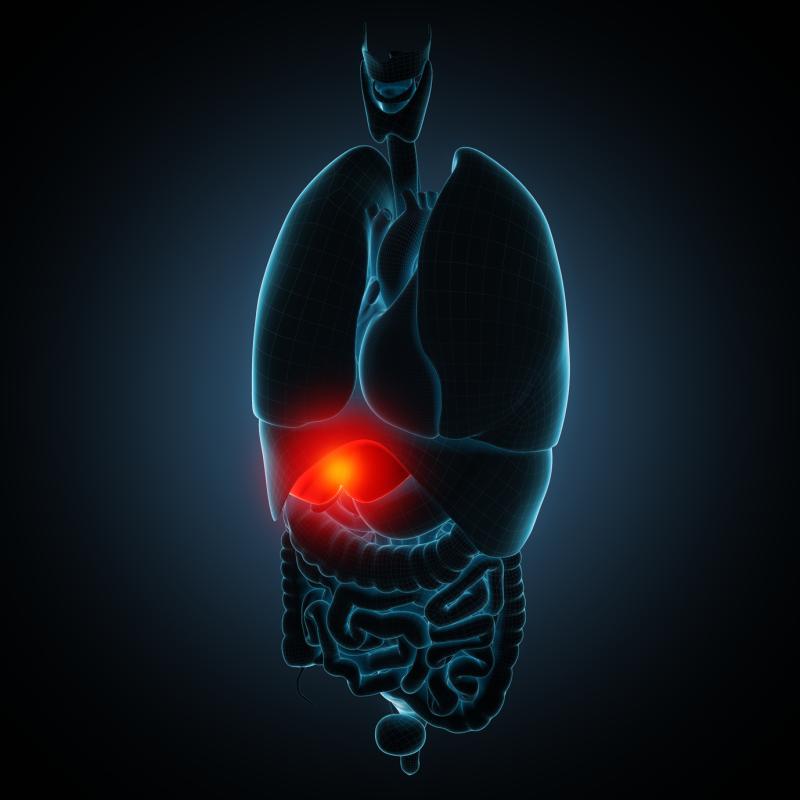9 Aug 2016
Cholecystectomy potentially increases the risk of subsequent peptic ulcers, according to a population-based study from Taiwan.
Surgical removal of the gallbladder is the gold standard for treating symptomatic gallstones. Despite this, a good number of patients (up to 47 percent) remains dissatisfied after the procedure. The dissatisfaction is frequently attributed to postcholecystectomy syndrome (PCS). Evidence shows that cholecystectomy promotes gastritis, which contributes to PCS.
To investigate the subsequent risk of peptic ulcers after cholecystectomy, the researchers examined the medical records of 5,209 patients who underwent cholecystectomy and received a discharge diagnosis of gallstone in comparison with 15,627 matched controls. Follow-up period was 5 years. Geographic location, hypertension, hyperlipidaemia, diabetes, CHD, obesity, alcohol abuse/alcohol dependence syndrome, and tobacco use disorder were included in the analysis as confounding factors.
Peptic ulcers developed in 9.76 percent of patients overall, with the prevalence being higher in the surgery than the control group (674 [12.94 percent] vs 1,359 [8.7 percent]; p<0.001). The likelihood of subsequent diagnosis of peptic ulcers was 2.34-fold (95 percent CI, 1.98 to 2.77) higher at 1 year, 1.84-fold (1.63 to 2.06) higher at 3 years, and 1.56-fold (1.41 to 1.72) higher at 5 years for patients who underwent cholecystectomy than for patients who did not. [Sci Rep 2016;doi:10.1038/srep30702]
On further analysis, after controlling for confounders and excluding cholecystectomy patients who died during the follow-up, the 5-year risk of developing peptic ulcers was attenuated (hazard ratio [HR], 1.48; 1.34 to 1.64). Patients in the surgery group were 1.70 times (1.44 to 1.99) and 1.71 times (1.36 to 2.15) as likely as controls to develop gastric and duodenal ulcers, respectively. Overall, the risk of peptic ulcers, regardless of the type, was higher in the surgery than in the control group.
“The mechanisms underlying the relationship between a cholecystectomy and peptic ulcers remain unclear. One possible explanation could be that [duodenogastric reflux (DRG)], which damages the gastric mucosa by bile acids and pancreatic phospholipase A2, leads to peptic ulcers. In addition, some animal studies demonstrated that DGR suppresses somatostatin concentrations and increases intragastric gastrin and acid secretion,” researchers explained.
As the previous studies suggested, DGR may play a role in the pathogenesis of gastric and duodenal ulcers, in addition to the altered antroduodenal motility and delayed gastric emptying after a cholecystectomy, researchers said, adding that H. pylori is also considered an important risk factor in peptic ulcers.
The current study is limited by the absence of information on H. pylori in gastric biopsies, as well as relevant records on data for laboratory examination, biochemical examination, or diagnostic imaging. The researchers also mentioned that physicians do not routinely biopsy the gastric mucosa to identify bile reflux gastritis in Taiwan, preventing them from identifying the pathogenesis of cholecystitis.
“Despite the aforementioned limitations, this study demonstrated a relationship between a cholecystectomy and a subsequent diagnosis of peptic ulcers,” they said.
“We suggest that clinicians be alert and suspect peptic ulcers with persistent epigastric pain or dyspepsia in patients with a prior cholecystectomy.”

